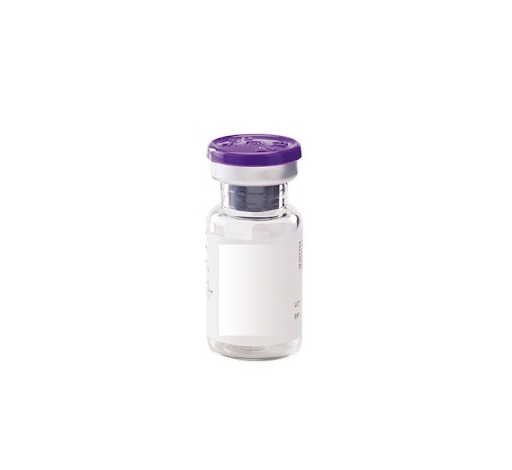Hyaluronidase: Structure, Functions and Therapeutic Applications

Hyaluronidase is an enzyme that plays a crucial role in the degradation and metabolism of hyaluronic acid (HA), a major component of the extracellular matrix (ECM) and synovial fluid. This enzyme is widely distributed in various tissues and is involved in numerous physiological and pathological processes in the body. Understanding the functions, mechanisms of action, and therapeutic applications of hyaluronidase is essential for appreciating its significance in biology and medicine visit here https://dermalfillers2000.shop/en/43-hyaluronidase.
Structure and Classification
Hyaluronidase belongs to a family of glycosidase enzymes that catalyze the hydrolysis of glycosidic bonds in hyaluronic acid. Structurally, hyaluronidase is a globular protein with an active site responsible for its enzymatic activity. There are multiple isoforms of hyaluronidase, which are classified based on their tissue distribution, substrate specificity, and physiological roles. For instance, human hyaluronidase has several isoforms, including HYAL1, HYAL2, and HYAL3, each with distinct properties and functions.
Mechanism of Action
The primary function of hyaluronidase is to degrade hyaluronic acid by breaking down its glycosidic bonds. Hyaluronic acid is a linear polysaccharide composed of repeating disaccharide units of glucuronic acid and N-acetylglucosamine. The enzymatic action of hyaluronidase results in the cleavage of these bonds, leading to the fragmentation of hyaluronic acid into smaller oligosaccharides and eventually into individual monosaccharides.
The degradation of hyaluronic acid by hyaluronidase facilitates tissue remodeling, cell migration, and diffusion of molecules within the ECM. This enzymatic activity is particularly important during various physiological processes, such as wound healing, embryonic development, and inflammation, where the turnover of hyaluronic acid is essential for tissue homeostasis and repair.
Physiological Functions
Hyaluronidase plays a pivotal role in numerous physiological processes in the body:
Wound Healing: During tissue injury, hyaluronidase facilitates the breakdown of hyaluronic acid, allowing for the migration of inflammatory cells, fibroblasts, and endothelial cells to the wound site. This promotes tissue repair and regeneration by facilitating cell proliferation, angiogenesis, and collagen deposition.
Embryonic Development: Hyaluronidase is involved in the remodeling of the ECM during embryogenesis. It aids in the formation of tissues and organs by facilitating cell migration, differentiation, and morphogenesis.
Ovulation and Fertilization: In the female reproductive system, hyaluronidase is essential for the penetration of sperm through the cumulus oophorus, a layer of hyaluronic acid-rich matrix surrounding the oocyte. This enzymatic activity is crucial for successful fertilization.
Joint Function: In synovial joints, hyaluronidase contributes to the turnover of hyaluronic acid in the synovial fluid, which lubricates and nourishes the joint surfaces. Proper regulation of hyaluronidase activity is essential for maintaining joint function and preventing conditions like osteoarthritis.
Pathological Implications
Dysregulation of hyaluronidase activity can contribute to various pathological conditions:
Inflammation and Autoimmunity: Elevated levels of hyaluronidase and the resulting degradation of hyaluronic acid can exacerbate inflammation and tissue damage in autoimmune diseases like rheumatoid arthritis and inflammatory bowel disease.
Cancer Progression and Metastasis: Hyaluronidase produced by cancer cells and tumor-associated stromal cells promotes tumor growth, invasion, and metastasis by remodeling the ECM, facilitating angiogenesis, and promoting cell migration. Targeting hyaluronidase has emerged as a potential strategy for cancer therapy.
Age-related Changes: Decreased hyaluronidase activity and accumulation of hyaluronic acid in the ECM contribute to skin aging, loss of tissue elasticity, and joint stiffness observed with aging.
Therapeutic Applications
Given its diverse roles in physiology and pathology, hyaluronidase has been explored as a therapeutic target and agent for various medical applications:
Drug Delivery: Hyaluronidase has been used as an adjuvant in drug formulations to enhance the penetration and diffusion of therapeutic agents through tissues, particularly in tumor-targeted therapies where increased permeability of the tumor microenvironment is desired.
Cosmetic and Dermatological Treatments: Hyaluronidase is used in aesthetic medicine to dissolve hyaluronic acid-based dermal fillers and correct overcorrections or complications resulting from cosmetic procedures. It is also employed in dermatology for the treatment of conditions like keloids, scars, and vitreous floaters.
Assisted Reproductive Technologies: In fertility treatments, hyaluronidase is utilized to facilitate sperm penetration through the cumulus oophorus during intracytoplasmic sperm injection (ICSI) procedures, improving the chances of successful fertilization.
Anti-cancer Therapy: Targeting hyaluronidase activity has been explored as a novel approach to cancer treatment. Inhibitors of hyaluronidase are being developed to inhibit tumor growth, and metastasis, and enhance the efficacy of conventional chemotherapy and immunotherapy.
Conclusion
Hyaluronidase is a multifunctional enzyme with diverse roles in physiology and pathology. Its ability to degrade hyaluronic acid makes it essential for tissue remodeling, cell migration, and various biological processes. While dysregulation of hyaluronidase activity can contribute to pathological conditions like inflammation, cancer, and aging its therapeutic potential has been harnessed for drug delivery, cosmetic treatments, fertility treatments, and cancer therapy. Continued research into the mechanisms of hyaluronidase action, its isoforms, and its interactions with other molecules will further elucidate its significance and potential applications in medicine and biotechnology.




